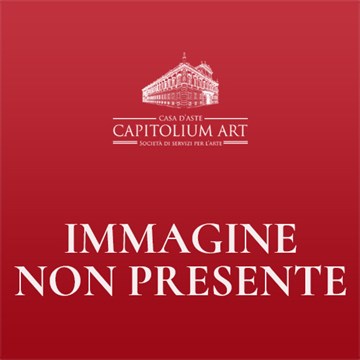Gianmaria Potenza Biography
Gianmaria Potenza was born on 9 December 1936 in Venice, where he still resides and works in the suggestive artists' area of San Trovaso. He trained at the State Art Institute of Venice under the enlightened guidance of Giorgio Wenter Marini, finishing his studies in 1956. He soon opened his own studio where he practiced various forms of art: from sculpture to painting to mosaic. He made his public debut in 1952 by participating in a group show at the Bevilacqua La Masa Foundation in Venice where he held his first solo exhibition in 1958. In 1954 and 1956, as best student, he was invited to exhibit at the Venice Art Biennale, where his works were also present in 1958, 1960, 1966, 1968, 1986, 1995, 2009. His reputation for whimsy and a refined creator of forms, he expanded to such an extent that he received commissions from Italy and abroad, especially for the decoration of ships, hotels and public buildings, sometimes collaborating with world-famous architects. No less important are the sacred art works created for Italian and foreign churches. Furthermore, between the 1960s and 1970s, he conceived and created the furnishings and sacred vestments for the Holy See under the Pontificate of Paul VI. Since the 1960s, Potenza has also been interested in the study of advertising lines for various industries and commercial chains and in 1968 he founded the La Murrina glass factory, designing objects and elements for lighting and furnishings. Numerous personal and collective exhibitions have ensured that Potenza's art is widely appreciated in Italy and abroad. Only in recent years has he exhibited in St. Petersburg, Samara, Krasnodar, Rostov, Assisi, Rome, Venice, Padua, Genoa and Milan, without considering the numerous works already present in public and private collections around the world. Critics have always underlined his great ability to invent exquisite forms of art, always poised between instinct and culture, between fable-like and symbolic dimensions, adopting the most diverse means, that is, broadening the very concept of painting and sculpture to old materials. and new, enriching the prestige of an art which found its most famous interpreters in Venice, from the sixteenth to the eighteenth century.
























